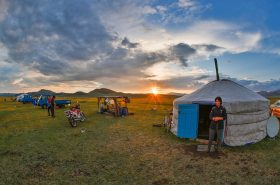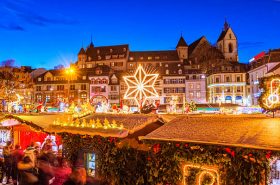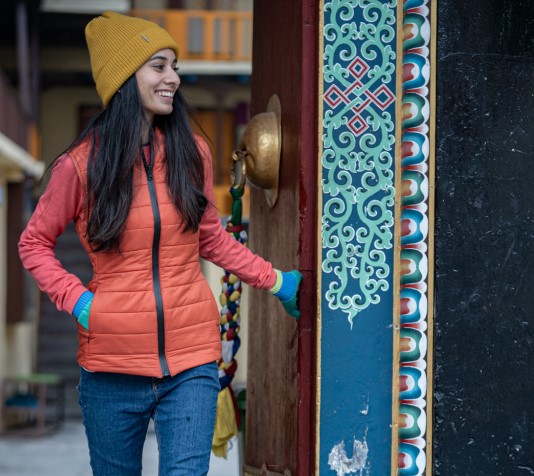
Table of Contents
Discover Japan in Winter: Essential Travel Tips and What to Wear
Are you ready for a winter adventure like no other? Have you ever dreamed of exploring the enchanting beauty of Japan during the snowy season? Wondering what to wear in Japan in winter season to stay warm and stylish?
Well, look no further! In this exciting blog post, we’re here to guide you through an incredible journey to discover Japan in all its winter glory. Get ready to dive into a world of mesmerizing landscapes, cultural traditions, and of course, the essential travel tips and fashion advice you need to make the most of your winter escapade. So, are you ready to bundle up, explore, and experience the magic of Japan in winter? Let’s get started!
Japan is located in the Pacific Ocean, chilly winds blow over it making the weather gradually cold. Big cities like Osaka and Tokyo have short winters and occasional snowfall.
As you head towards the northern parts of Japan, the temperature starts to drop. You will experience bitterly cold, long winters with heavy snowfall for months. Despite the cold weather, there are many sights to see and experiences to encounter during your trip to Japan.
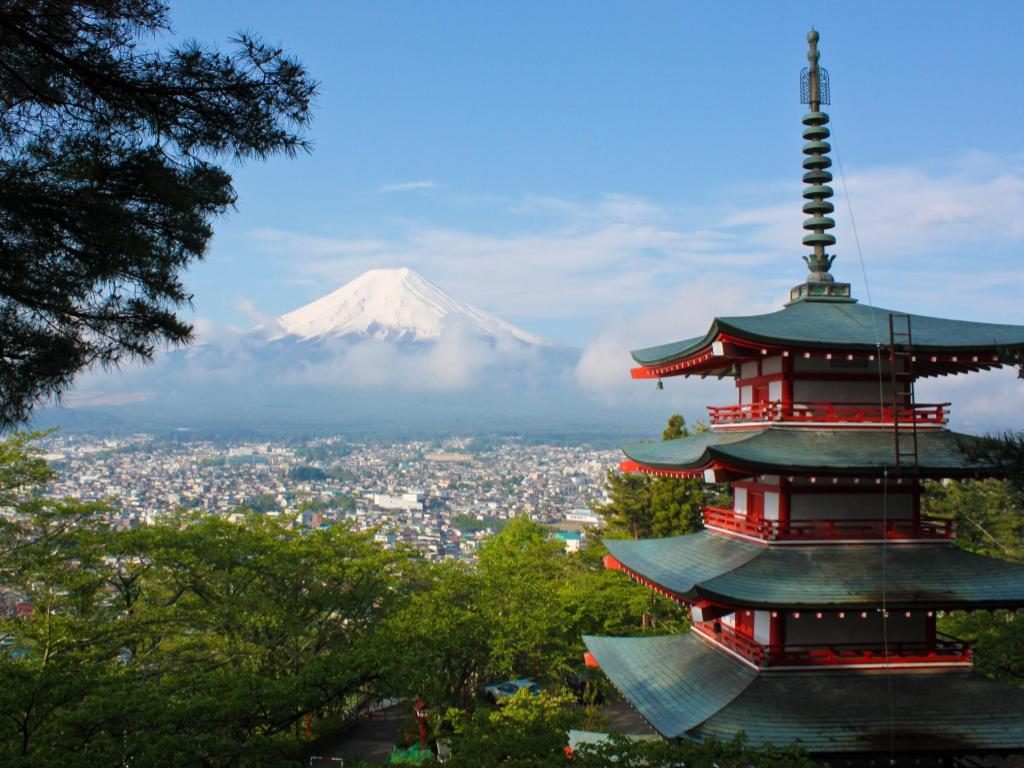
Experience true Japanese culture with culturally rich events that are listed further in the article.
Winter in Japan Travel Tips: What to expect
Japan can be quite a mystery for many visitors as many of us tend to know the country from its architecture and cherry blossoms. But it is important to know that Japan can make a wonderful destination for your next winter trip.
Being culturally rich, it has plenty to offer to its tourists some of which is explained through the course of this article.
Winter temperatures in Japan
Japan experiences the winter season generally from December to February. During these winter months, places like Tokyo, Osaka and Kyoto also experience small amounts of snow thus making Japan a pleasant winter destination.
- December – The temperature range seen in Tokyo is from around 12 degrees Celsius to 5 degrees Celsius.
- January – The month of January sees a further drop in the temperature range. One can experience temperatures as cold as 2 degrees Celsius to 10 degrees Celsius. While August is the warmest month in Japan, January acts as the coldest.
- February – February is when the winter season begins to falter. One experiences a temperature range of 11 degrees Celsius to 3 degrees Celsius.
Things to do in Japan in Winter
Despite the unbearable, rough winters of Japan, all kinds of snow events are held across the country. It comes as no surprise that Japan welcomes over 13 million visitors every year. The advent of the winter season opens up a whole new Japan for the locals as well as the tourists.
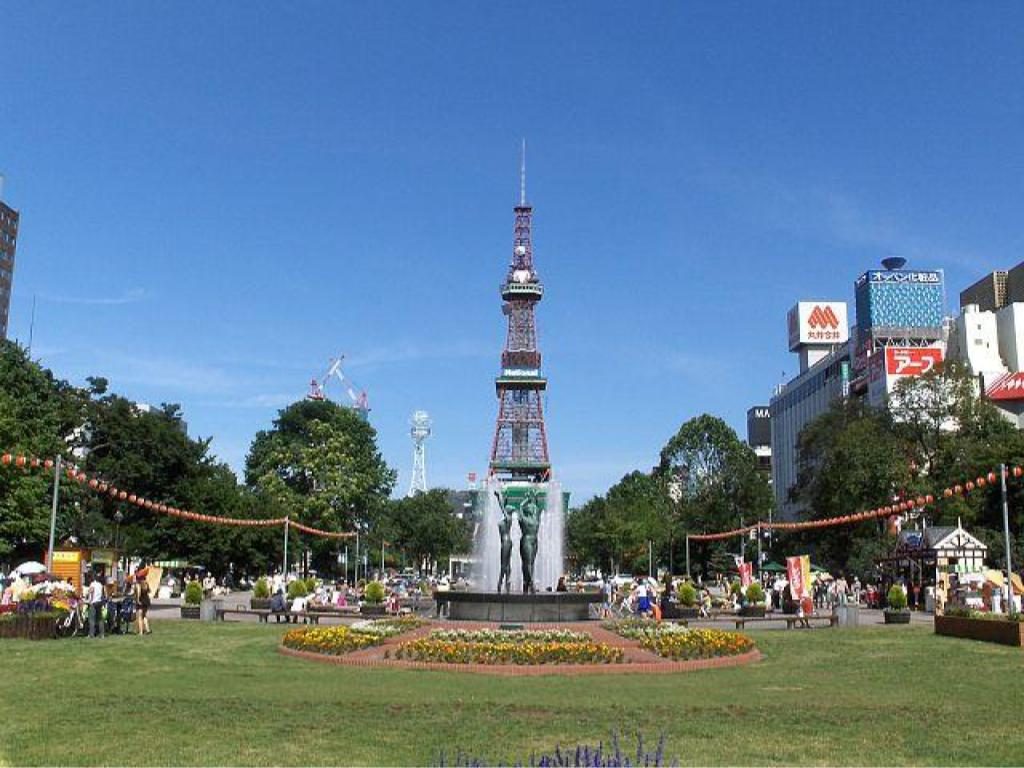
Sapporo Tower, Japan
Apart from the variety of cultural fests, the place is also renowned for sports activities like skiing or hiking. Shiga Kogen is a very popular skiing area and resort for winter activities.
Another place to visit would be the Tadami Line. You might know this place from the plenty of pictures that are taken here. Being a very picturesque area, this is a railway line. Its section between Aizu- Kawaguchi and Tadami has been shut down since July 2011. However, this section is to be restarted later this year or around 2022.
Japan Winter Festivals
Held over seven days in February each year, the Sapporo Snow Festival in Hokkaido is world-famous; the winter showcase during this event is spectacular. One should not miss its breathtaking views which attract many visitors not just during the winters but also during the warmer months.
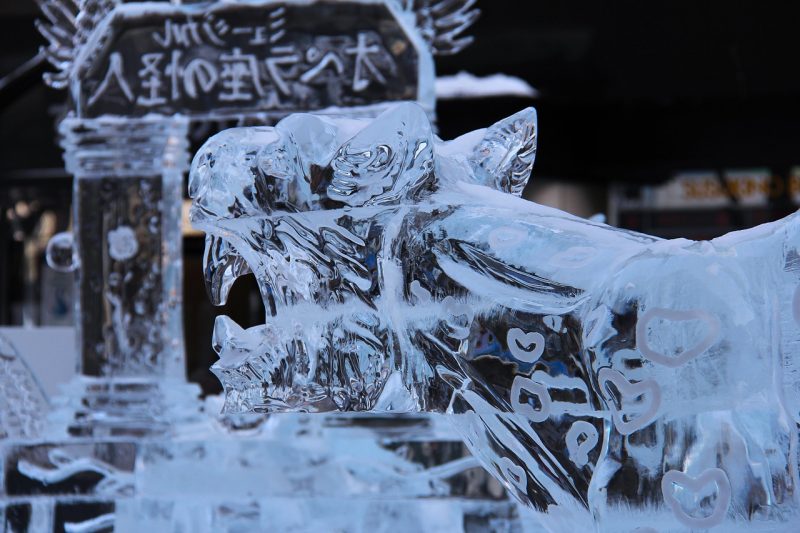
Sapporo Snow Festival
Every year the festival has a tradition of carving sculptures. At night these sculptures are illuminated, and the main street leading from the Sapporo rail station is all done up with lights.
You must witness the gigantic snow sculptures erected by the people of Sapporo and take a look at Japan’s Ground Self-Defence Force which is considered a masterpiece at this event.
The Asahikawa Winter Festival held in February is also known for its snow sculptures. The World Ice Sculpting Contest held here draws many talented ice sculptors not just from Japan but across the globe who vie for the “Best Ice Sculpture” title.
The opening show of this festival has powerful fireworks to thrill you. It looks spectacular when gigantic sculptures of this festival softly glow in the night. It is a sight not to be missed as these winter illuminations remind you of bright lanterns floating on a river.
Snowshoeing in Japan
Another fun-filled activity that one can indulge in is snowshoeing. Snowshoes make it fun and easy to walk through the snow!
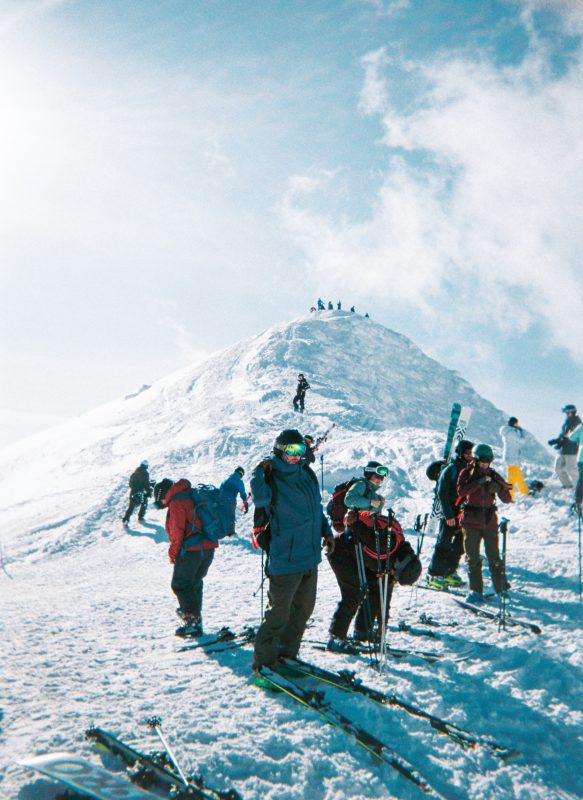
Snowshoeing in Japan
The sparkling-white Myoko Highlands of Japan, called Myoko Kogen, Hakuba and Shigure is considered the Mecca for snowshoeing. It does not matter if you have no experience; try a half-day trip of snowshoe hiking.
Pause to enjoy some icicles, draw angels in the snow, catch snowflakes or watch the wildlife. There are plenty of move-at-your-own-pace snowshoe experiences to be enjoyed here.
You can also try your hand at Origami/Paper folding and making your own soba (buckwheat) noodles under the guidance of Hakuba’s experts. You even get to cook and eat them later.
Visiting the Ice Village
You should also consider visiting the mystic ice villages of Japan that appear only in winter from the end of December to mid-March. Some of the most famous villages are Hokkaido, Tomamu and Asahikawa.
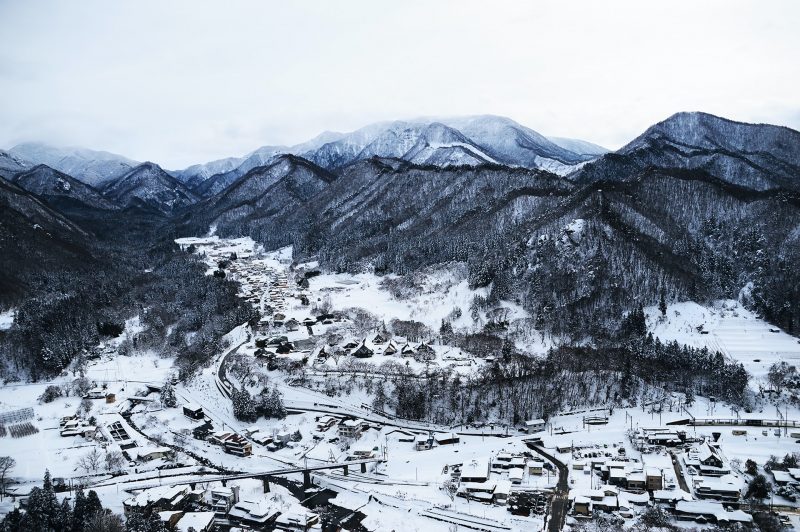
Japan Ice Village
These villages have numerous charming, scenic viewpoints and multiple hotel buildings for those looking for an overnight stay.
One can enjoy activities like the snow park, ice fire palace, warm-up cottages, Santa’s home, ice skating, skiing, and ice bar among many others. Children can be kept busy in ice schools that teach how to make ice candles and glasses.
Onsen
An onsen is a term for hot springs in the Japanese language and these can be enjoyed throughout the year. Many travellers recommend travelling to Shibu Onsen or Yamanaka Onsen.
These are attractive hot spring towns that have traditional baths for you. Pamper yourself in these traditional baths with mineral content such as iron, cobalt, etc. Many of the Onsens have traditional Japanese floors, known as tatami, in the changing rooms.
Be careful of where you put your shoes. In the Japanese tradition, it is considered bad manners to wear shoes on the tatami.
Nabana no Sato
It is also worth visiting the Nabana no Sato theme park on the island of Nagashima in Kuwana. The Nagashima Resort comprises 4 main facilities – the Nagashima Spa Land, an amusement park which also includes a water park, a hot spring/onsen complex, an outlet shopping mall, and a flower park named Nabana no Sato.
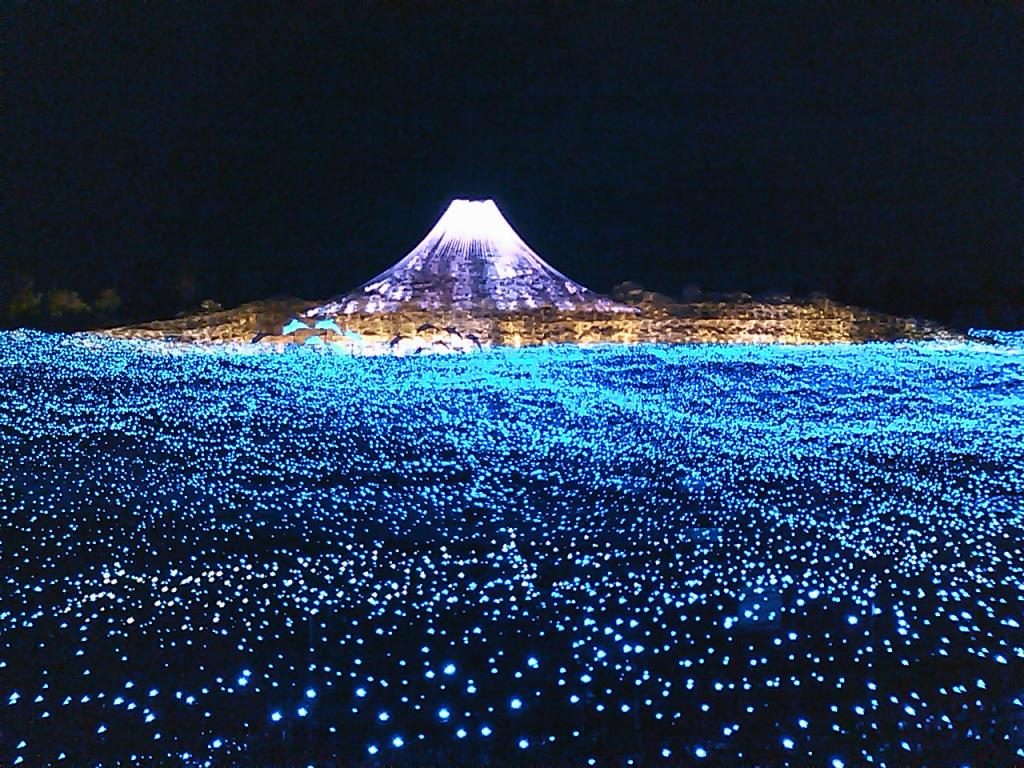
Nabana no Sato, Japan
The gardens are home to a variety of flowers, such as Hydrangea, Tulips, Roses, and Daffodils. Nabana no Sato attracts tourists all year round, however, the Winter illuminations which are one of the largest in Japan, gather large crowds from across the country. They are held from November to the end of March.
Jigokudani Monkey Park
Jigokudani Monkey Park is located in Yamanouchi, Nagano Prefecture in Japan. Being a part of Joshinetsu Kogen National Park, one can find this place near the Yokogu River. The place is also beautified by the heavy snowfalls that are available for visiting only via a 2 km long footpath being covered in snow for four months a year.

View from Jigokudani Monkey Park
Macaca fuscata or the Japanese Macaques are the snow monkeys that this park proudly showcases.
Northern Alps
Home to some of Japan’s most spectacular scenery, the Northern Alps of Japan is accessed from Matsumoto. Gifu, Toyama and Nagona Prefectures are stunning peaks above 3000m that are enjoyed by experts and amateur hikers alike.
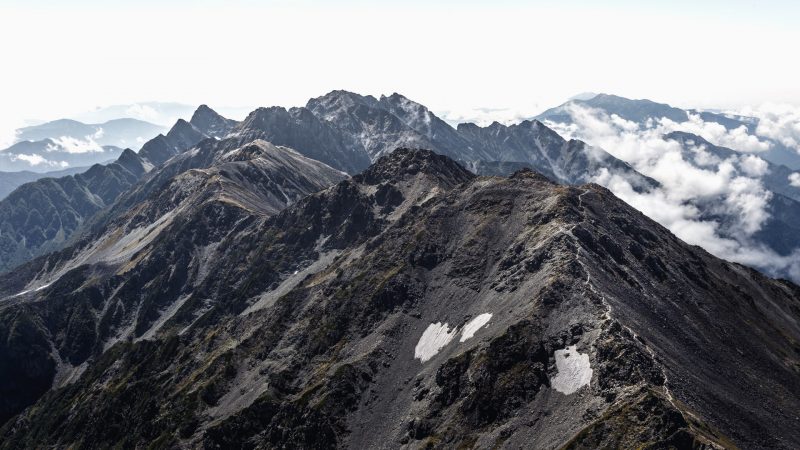
Japan Alps
Highlights include the Chubu-Sangaku National Park, Shin-Hotaka Ropeway and soaking up the splendour of Hida’s many mountain rotenburo (an open-air bath).
Open from late July to late August, and during the foliage season in October, Kamikōchi has become a base for day-trippers, hikers and climbers who come for snow-capped peaks, bubbling brooks, wild monkeys, wildflowers and ancient forests.
It’s perfectly feasible to visit as a day trip but you’ll miss out on the pleasures of staying in the mountains and taking uncrowded early-morning or late-afternoon walks.
Ice Fishing in Japan
Ice fishing is a popular winter activity, enjoyed during the cold months of January to March. Barato River of Hokkaido, Eniwa, Shinotsu and Lake Yamanakako are popular destinations for this much-enjoyed family sport.
The thickness of the ice can be more than 50cm! The fishing instructor will show you the ropes, and with a bit of practice, you will find it easy to get yourself off the tasty local wakasagi (smelt)!
Horse Riding in the Snow
Horse riding in Niseko and Mustang’s Town during winter is another great way to relax and see some of the surroundings that can only be reached by horse.
These towns are located on hills, so the air is fresh and blessed with natural beauty. Tours can be organised in advance for beginners in horse riding.
Be sure to carry a wool cap, waterproof warm jacket and thermals to enjoy the ride on this beautiful winter land.
Trying the Japanese Cuisine
Japan happens to be one of the largest culinary countries in the world. The country gives importance to seasonal dishes to decide the menu. Make it a point you order what’s fresh and produced during your visit. In the year 2011, Japan overtook France to be the country with the greatest number of Michelin 3-starred restaurants and Tokyo is the city with the greatest number of Michelin 3-starred restaurants in the world.
Make use of this information and try out the street cuisine and traditional Japanese delicacies. Don’t hold yourself back and stick to what is popular in Japan. Yes, Japan is famous for sushi but don’t forget to try some yummy kaiseki while you are at it.
This multi-course dinner originated centuries ago alongside the tea ceremony that was started in Kyoto. You should even try Natto in the popular Tsukishima restaurant. Try not to limit your exploration of the haute cuisine that Japan offers.
Watch this video for some winter wear trip for your trip to Japan
What to Wear in Japan in Winters
Are you planning to visit Japan in winter and wondering what to wear to stay comfortable and stylish? Look no further! In this section of our blog, we’ll provide you with essential tips on what to wear in Japan in winter season.
Whether you’re visiting in December or braving the chilly temperatures throughout the winter months, we’ve got you covered. From layering strategies to must-have winter accessories, we’ll help you navigate the Japanese winter fashion scene like a pro.
And if you’re considering a trip during the summer, don’t worry – we’ve included some insights on what to wear in Japan when the sun is shining bright. So, get ready to dress to impress and make the most of your time in this incredible country, regardless of the season. Let’s dive in and discover the perfect outfits for your Japan adventure!
Puffer Jackets, Parkas or Trench Coats
Winters in Japan can be tough to take for someone who is not used to very cold climatic conditions. In such a scenario, it is better to research and plan out what to wear well in advance that can keep you warm and enhance your experience in Japan. Layering is a great way to stay warm as it helps to keep you insulated and comfortable in winter clothing.
Warm jackets: Wear them at a ski resort in Japan
The three main kinds of layers are base layers, mid-layers and outerwear or shell layers. Outerwear includes winter jackets and coats like puffer jackets, and parkas. These are usually the outermost winter layer. Check out Kosha’s range of outerwear. Kosha’s parkas and puffer jackets guarantee insulation while being light in weight and compressible.
Check the fleece-lined puffer jacket for men here
Check out the Fleece lined puffer jacket for women here
Sweaters and Pullovers
Sweaters and pullovers are the kind of winter apparel that count as the safest, most trusted winter garments. Reliable for a long time, sweaters have maintained their status as the most sought-after winter clothing. So if you are wondering what to wear on your next winter vacation to Japan, think no more and buy Kosha’s Merino wool sweaters and Pullovers.
Check out Kosha’s range of sweaters which are dual-coloured and reversible. They are available in full sleeves as well as in the form of vests.
Thermal for Base layers
When it comes to dressing for the extreme winters in Japan, winter layering is a must. And one key component of this layering strategy is warm base layers. These base layers, which form the innermost lining next to your body, play a crucial role in keeping you comfortable and insulated from the cold. When visiting Japan in December or during the winter season, especially in ski resorts, combining warm base layers with your outerwear is essential.
Warm Base Layers: Use them along with outerwear in ski resorts
At Kosha, we offer a remarkable range of base layers designed with a unique blend of merino wool and bamboo fabric. This combination ensures that our base layers are not only incredibly soft and cushiony, but also provide optimal warmth and insulation. With base layers worn underneath your regular clothing, it’s important to prioritize comfort and breathability, ensuring that they don’t cause any itching and are gentle on your skin.
Check out our collection of men’s thermal base layers here. And for women’s thermal base layers, take a look at our selection here. By incorporating these high-quality base layers into your winter wardrobe, you can elevate your level of comfort and enjoy the best that Japan has to offer during its chilly winter months.
So, don’t forget to layer up with our cozy and breathable base layers, and get ready to embrace the beauty of Japan in winter with style and comfort!
Merino Wool Snow Pants
When braving the extreme cold or snowy areas of Japan, it’s crucial to wear clothing made from breathable materials that offer both mobility and protection. Heavy fabrics like denim tend to absorb moisture and weigh you down, making it difficult to fully enjoy winter activities.
Instead, opt for snow pants made from high-performance materials like nylon or thermals crafted from merino wool and other sustainable fabrics. These options provide excellent insulation while allowing for comfortable movement. At Kosha, we offer a fantastic collection of winter bottoms designed to keep you warm and stylish throughout your Japan winter adventure.
So, whether you’re exploring Japan in December or seeking comfortable attire for summer activities, consider our range of Merino wool snow pants and other winter bottoms. Embrace the freedom of movement and the protection they offer, and make the most of your winter escapades in Japan. Check out our collection now to figure out what to wear in Japan in winter and prepare to elevate your winter wardrobe to new heights!
Warm Winter Accessories
Winter accessories make for the informal fourth layer of winter wear. However, it should be noted that these informal layers have a lot of utility. Apart from fulfilling the aesthetic requirements that complete an outfit, these winter accessories play a major part in insulation provision.
All-weather Kosha winter wear Accessories
Winter accessories constitute gear like scarves, mufflers, stoles, gloves, mittens, socks, earmuffs, monkey caps, beanies and more. These winter accessories will answer all your queries about what to wear in Japan in winter and will ensure that the otherwise exposed areas of the body are covered and kept warm. Check out Kosha’s range of winter accessories for your Japan trip in winter.
Warm shoes or boots
When it comes to winter in Japan, don’t underestimate the importance of warm shoes or boots. It’s easy to overlook this essential accessory, opting for everyday sneakers or sandals, or even sports shoes with spikes. However, during the winter season, it’s crucial to choose footwear that is specifically designed for the cold weather conditions.
If you are also thinking of what type of footwear to wear in Japan in winter, here is what we recommend! Winter vacations call for lightweight yet grippy shoes or boots. They should provide reliable traction and keep your feet warm and dry. With the possibility of snow or unexpected rain, waterproof footwear is a must-have. So, be sure to pack shoes or boots that are made of high-quality materials and offer the reliability you need to navigate the winter terrain.
Trust us, you don’t want to find yourself settling for the first decent pair of shoes you come across in a foreign country. It’s always better to come prepared with the right footwear, ensuring both comfort and style during your winter adventures in Japan.
So, don’t forget to prioritize warm and waterproof shoes or boots for your winter escapades in Japan. Give yourself the freedom to explore without worrying about uncomfortable or unsuitable footwear. Stay warm, stay dry, and make the most of your time in this incredible country!
Check out winter boots for men here
Check out winter boots for women here
Woollen Warm socks
When it comes to winter in Japan, the significance of socks cannot be overstated. Wearing the right socks is crucial for several reasons. Not only do they protect your feet from shoe bites and blisters, but they also provide essential insulation to keep your feet warm and cozy.
That’s where Kosha’s no-blister socks come into play. These thermal socks are specially designed to meet your winter footwear needs. Crafted from breathable merino wool, they offer superior comfort and temperature regulation. With added arch support, they provide excellent grip and stability. Plus, their mesh construction ensures they are sensitive to temperature changes, keeping your feet comfortable throughout the day. And to top it off, they even help control foot odour, ensuring freshness.
So, when it comes to what to wear in Japan in winter, don’t overlook the importance of high-quality socks. Opt for Kosha’s range of no-blister socks, and give your feet the warmth, comfort, and protection they deserve during your winter adventures in Japan.
Check out Kosha’s no blister socks for men here
Check out Kosha’s no blister socks for women here
View this post on Instagram
Best time to visit Japan?
Japan is a world apart…
The best time to visit Japan is from December to February. You are sure to find snow-clad mountains, which are perfect for winter sports such as skiing, ice-skating, snowboarding, snowshoeing, ice-fishing, and horse-riding even in the snow.
There are many winter-sport resorts in Japan that offer packages that you can take advantage of to enjoy these outdoor activities.
The Japanese spirit is strong, warm, and incredibly welcoming. If an international holiday is on the itinerary, we suggest that you plan your journey to this gorgeous island nation where a unique civilisation blossomed and today thrives in delicious contrasts of traditional and modern culture. And not just that, we have also answered all questions to help you figure out what to wear in Japan in winter for you to capture your best moments in stylish as well as warm winter clothing options.
FAQ’s
What do people in Japan wear in winter?
Japanese people wear warm winter clothes such as coats, sweaters, and scarves to stay warm in the cold winter months.
How should I dress in Japan in December?
Dress in layers with warm, waterproof clothing in December in Japan, as the average temperature is 45°F (7°C).
How should I dress for Tokyo in December?
Pack warm clothes for Tokyo in December, with layers to adjust to the varying temperatures.
Do I need thermals for Japan?
Yes, thermals are a good idea for Japan in the winter, especially if you are visiting the mountains or colder regions.
What shoes to wear in Japan in December?
Wear waterproof, warm, and comfortable shoes in December in Japan. Snow boots are not necessary unless you are going to be hiking in the mountains.
Stay tuned for more stories! Share your adventure and experience with us by tagging us @koshatravelwear on Instagram, Facebook, LinkedIn, Pinterest and use #mykoshastory!
For any queries related to wearing thermals, base layers, or winter wear in general, visit Kosha’s store and get a free consultation! While you’re at it, check out Kosha’s website for the wide range of thermals and jackets available at Kosha.
This blog article was updated by Kosha Team Member – Sanika Totade.




